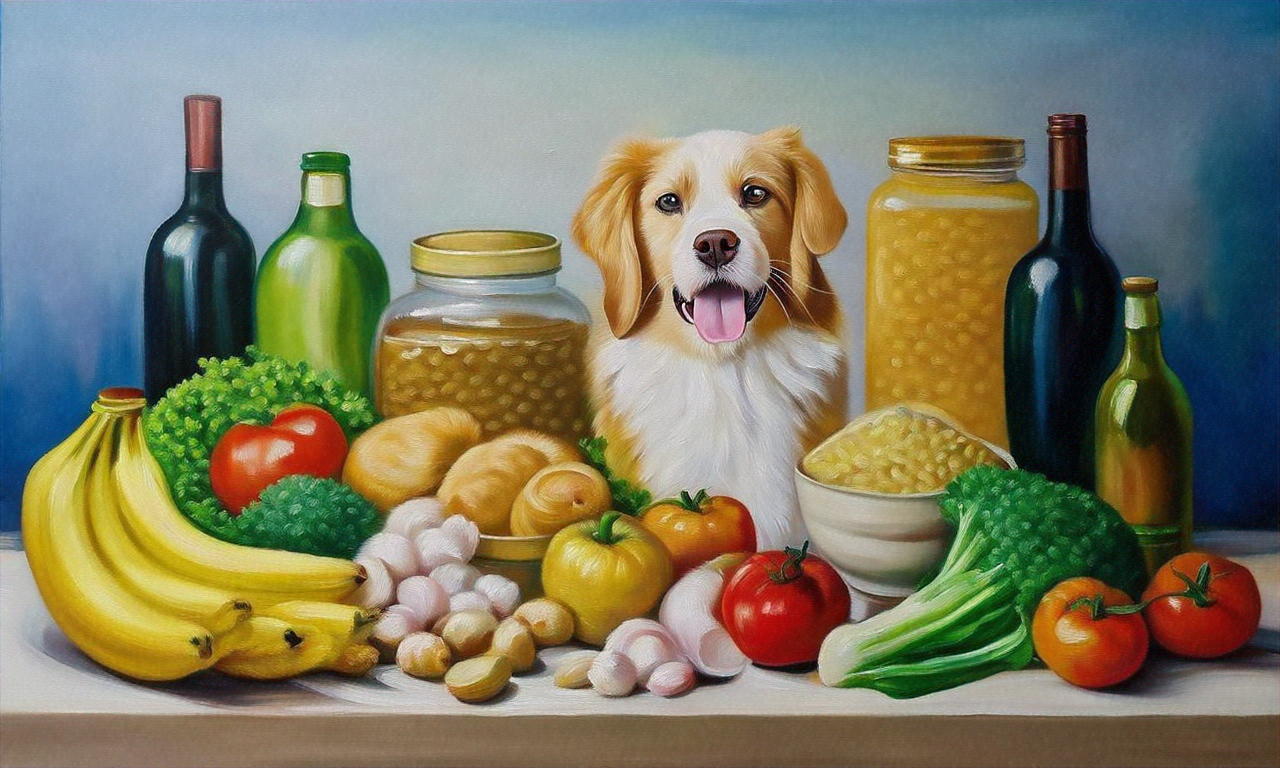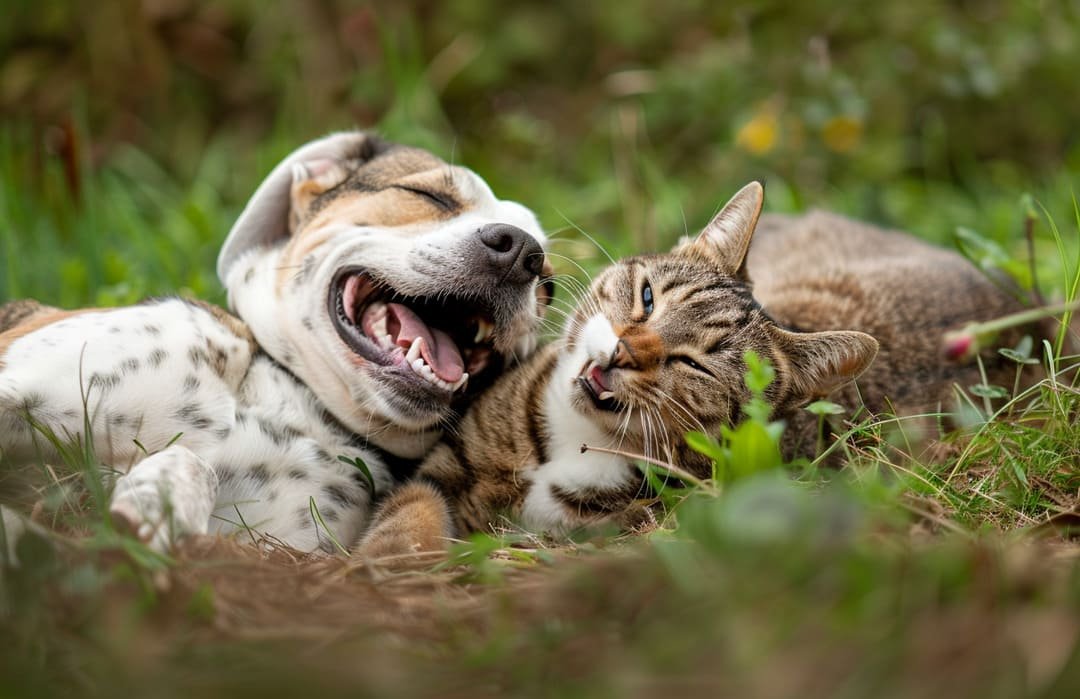The quest for providing the best pet food for our furry companions is more than just a choice – it's a commitment to their health and happiness. As pet owners, we strive to nourish our pets with the finest nutrition tailored to their unique needs. Join us on a journey to unravel the secrets of selecting the perfect diet that will fuel your pet's well-being and vitality. Let's delve into the intricacies of pet nutrition and discover how to make informed decisions that will optimize your pet's quality of life.
Understanding Pet Nutritional Needs
Pets, just like humans, require a balanced diet to stay healthy and thrive. Providing the best pet food tailored to their specific nutritional needs is crucial for their overall well-being. Here are some key factors to understand when it comes to your pet's nutritional requirements:
Importance of Balanced Nutrition
-
Ensuring a diet that includes all essential nutrients such as proteins, fats, carbohydrates, vitamins, and minerals.
-
Balancing these nutrients is vital for supporting your pet's growth, energy levels, and immune system.
Key Nutrients for Pets' Health
-
Proteins: Essential for muscle growth and repair.
-
Omega-3 fatty acids: Promote healthy skin, coat, and brain function.
-
Antioxidants: Help protect cells from damage and support the immune system.
Common Dietary Requirements for Different Pets
-
Dogs: Need high-protein diets with a balance of fats and carbohydrates.
-
Cats: Obligate carnivores requiring a diet rich in animal-based proteins.
-
Birds: Varied diet including seeds, fresh fruits, and vegetables for optimal nutrition.
Understanding these nutritional needs is the first step towards selecting the best pet food for your beloved companion. Remember to consult with your veterinarian for personalized advice based on your pet's unique requirements.
For further information on the importance of balanced nutrition for pets, you can refer to Royal Canin's guide to pet nutrition.
Factors to Consider When Choosing Pet Food
When selecting the best pet food for your furry friend, several factors should be taken into account to ensure they receive the optimal nutrition they need:
Age and Life Stage of the Pet
-
Puppies and kittens have different nutritional needs than adult or senior pets.
-
Specialized formulas are available for different life stages to support growth and development.
Specific Dietary Restrictions or Allergies
-
Some pets may have sensitivities to certain ingredients such as grains or common protein sources.
-
Opting for hypoallergenic or limited ingredient diets can help alleviate food allergies.
Ingredient Quality and Sourcing
-
Look for pet foods that list real meat as the primary ingredient and avoid fillers like corn or by-products.
-
Ethically sourced ingredients contribute to the overall quality and safety of the pet food.
Wet vs. Dry Food Options
-
Consider the pros and cons of wet and dry pet food based on your pet's preferences and dietary needs.
-
Wet food can help with hydration, while dry food may be more convenient for feeding and storage.
Taking these factors into consideration will guide you in making an informed decision when choosing the best pet food for your beloved companion. Additionally, consulting with your veterinarian can provide valuable insight into your pet's specific requirements.
Reading and Understanding Pet Food Labels
Interpreting pet food labels is essential for ensuring that you are providing the best nutrition for your pet. By understanding what to look for on a pet food label, you can make informed decisions about the food you choose for your furry companion:
Interpreting Ingredients List
-
Ingredients are listed in descending order by weight, with the main ingredient listed first.
-
Look for recognizable, whole food ingredients such as real meat, fruits, and vegetables.
Identifying Fillers and Potential Harmful Additives
-
Avoid pet foods that contain fillers like corn, soy, or wheat, which offer little nutritional value.
-
Check for artificial colors, flavors, and preservatives that may be harmful to your pet's health.
Checking for Nutritional Adequacy Statement
-
Look for a statement from the Association of American Feed Control Officials (AAFCO) indicating that the food is complete and balanced.
-
This statement confirms that the pet food has met the required standards for providing essential nutrients.
Understanding how to read pet food labels empowers you to make informed choices about the best pet food for your beloved companion's health and well-being. For further guidance on interpreting pet food labels, you can refer to Hill's Pet Nutrition's guide on deciphering pet food labels.
Popular Types of Best Pet Food
When it comes to selecting the best pet food for your beloved companion, there are various types of options available that cater to different dietary preferences and health needs. Here are some popular types of pet food to consider:
Grain-Free Options
-
Grain-free pet foods are formulated without common grains like wheat, corn, or soy.
-
Ideal for pets with grain sensitivities or for owners looking to mimic a more ancestral diet.
Limited Ingredient Diets
-
Designed for pets with food allergies or sensitivities by limiting the number of ingredients.
-
These diets typically contain a single protein source and a few key carbohydrates.
Raw Food Diets
-
Based on the concept of feeding pets a diet that simulates what their wild ancestors ate.
-
Consist of raw meat, bones, fruits, and vegetables, providing a natural and nutrient-dense meal.
Prescription Diets for Specific Health Conditions
-
Veterinarian-prescribed diets tailor-made to address specific health issues such as kidney disease, obesity, or allergies.
-
These diets are carefully formulated to support your pet's health and well-being.
Understanding the different types of pet food options available allows you to choose the best option that aligns with your pet's dietary needs and preferences. For more information on selecting the right type of pet food, you can explore Purina's guide on different types of pet diets.
Tips for Switching Your Pet's Food
Switching your pet's food requires careful consideration and a gradual transition to prevent any digestive upsets or food aversions. Here are some essential tips to keep in mind when transitioning your pet to a new diet:
Gradual Transition Process
-
Mix small amounts of the new food with the old food to introduce it gradually.
-
Slowly increase the ratio of new to old food over a period of 7-10 days.
Monitoring for Any Negative Reactions
-
Watch for signs of digestive issues such as vomiting, diarrhea, or changes in appetite.
-
If your pet shows any adverse reactions, consult with your veterinarian for guidance.
Seeking Veterinary Advice if Needed
-
Consult with your veterinarian if your pet has specific health conditions or dietary requirements.
-
Your vet can provide tailored recommendations for the best way to switch your pet's food safely.
By following these tips and being attentive to your pet's response during the transition, you can help ensure a smooth change to the best pet food for your furry companion's health and well-being. For more guidance on switching your pet's food, you can refer to Wellness Pet Food's article on transitioning pet foods.
Best Practices for Storing Pet Food
Properly storing pet food is essential to maintain its quality, freshness, and nutritional value for your furry friend. Here are some best practices to consider when storing pet food:
Proper Storage Containers
-
Use airtight containers specifically designed for pet food storage to prevent exposure to moisture and pests.
-
Opt for containers made of food-grade materials that help preserve the food's integrity.
Avoiding Exposure to Moisture and Pests
-
Store pet food in a cool, dry place away from direct sunlight and humidity.
-
Keep food containers off the ground and away from areas prone to pests like rodents and insects.
Shelf-Life Considerations for Different Types of Pet Food
-
Pay attention to the expiration dates on pet food bags and cans to ensure freshness.
-
Use older bags of food before newer ones to maintain rotation and prevent food spoilage.
By following these best practices for storing pet food, you can ensure that your pet's meals remain safe, nutritious, and appetizing. For additional tips on pet food storage, you can explore Chewy's guide on pet food storage tips.
Additional Supplements and Treats
In addition to providing the best pet food for your beloved companion, supplements and treats can complement their diet and promote overall health. Here are some key points to consider when incorporating supplements and treats into your pet's routine:
Importance of Supplementation
-
Supplements like omega-3 fatty acids can support healthy skin and coat.
-
Senior pets may benefit from joint supplements to maintain mobility and joint health.
Safe Treat Options to Complement the Diet
-
Choose treats made from high-quality ingredients with minimal additives.
-
Opt for treats that serve a specific purpose, such as dental health or mental stimulation.
Including supplements and treats in moderation can add variety to your pet's diet and provide additional nutrients and enjoyment. Remember to consult with your veterinarian before introducing any new supplements or treats to ensure they align with your pet's dietary needs. For more information on choosing the right supplements for your pet, you can refer to Hill's Pet Nutrition's guide on pet supplements.
Budget-Friendly Options for Best Pet Food
Providing your pet with high-quality nutrition doesn't have to break the bank. By exploring budget-friendly options for the best pet food, you can ensure that your furry companion receives the nutrition they need without compromising on quality. Here are some tips for finding affordable yet nutritious pet food:
Balancing Quality and Cost
-
Look for pet food brands that offer a balance of quality ingredients at a reasonable price point.
-
Compare prices across different retailers and consider bulk purchasing for potential discounts.
Tips for Finding Discounts or Deals
-
Keep an eye out for sales, promotions, and coupons from pet food manufacturers and retailers.
-
Consider signing up for loyalty programs or subscription services for ongoing savings on pet food purchases.
By being strategic in your approach to shopping for pet food, you can provide your pet with the best nutrition while staying within your budget. For more cost-saving tips on purchasing pet food, you can explore Petco's article on affordable pet food options.
Conclusion: Prioritizing Your Pet's Health
As a pet owner, choosing the best pet food for your beloved companion is a crucial decision that directly impacts their health and well-being. By prioritizing your pet's nutritional needs and following the guidelines outlined in this ultimate guide, you can ensure that your furry friend receives the optimal diet they deserve.
Recap of Key Points in Selecting the Best Pet Food
-
Understanding your pet's nutritional requirements based on their age, breed, and health status.
-
Reading and interpreting pet food labels to make informed choices.
-
Exploring different types of pet food options to find the most suitable one for your pet.
-
Implementing proper storage practices to maintain the freshness and quality of pet food.
Emphasizing the Long-Term Impact on Pet's Well-Being
By investing time and effort into selecting the best pet food, you are setting the foundation for your pet's long-term health and happiness. Remember, consulting with your veterinarian for personalized advice and monitoring your pet's response to dietary changes are essential steps in ensuring their well-being.
For further resources and expert guidance on pet nutrition, you can visit reputable pet food companies like Royal Canin to access valuable insights and products designed to meet your pet's specific needs. Your dedication to providing the best pet food reflects your commitment to nurturing a strong and vibrant bond with your furry companion.
Can I switch my pet's food abruptly to a new brand?
It is recommended to transition your pet to a new food gradually to prevent digestive upsets. Mixing small amounts of the new food with the old food and slowly increasing the ratio over 7-10 days can help your pet adjust smoothly.
How can I determine if a pet food is of high quality?
Look for pet foods that list real meat as the primary ingredient, avoiding fillers like corn, soy, or by-products. Check for a nutritional adequacy statement from AAFCO on the label to ensure it meets essential nutrient requirements.
Are raw food diets safe for pets?
Raw food diets can pose risks such as bacterial contamination and nutritional imbalances. Consult with your veterinarian before transitioning your pet to a raw diet to ensure it is suitable for their health needs.
What are the benefits of grain-free pet foods?
Grain-free pet foods may benefit pets with grain sensitivities or allergies. However, ensure the grain-free option still provides essential nutrients and doesn't compromise on overall balanced nutrition for your pet.
How can I store pet food correctly to maintain its freshness?
Use airtight containers designed for pet food storage to prevent moisture exposure and pests. Store pet food in a cool, dry place away from sunlight, and pay attention to expiration dates for optimal freshness.


